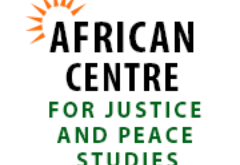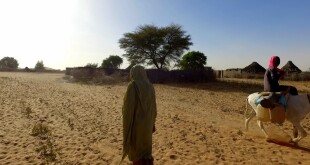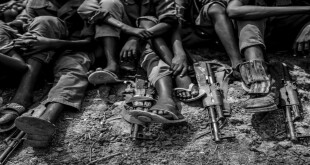(3 December 2017) Officials of the National Intelligence and Security Services have continued to subject newspapers to post-print censorship. Since African Centre for Justice and Peace Studies’ last press release on post-print censorship of 6 newspapers, the NISS has continued to prevent the distribution of daily print runs of 4 newspapers who had been subjected to repeated censorship in November.
On 3 December 2017, Altayyar, Alwatan, Algareeda and Akhir Lazha newspapers were prevented from distributing the day’s print runs by NISS officials without reasons given.
On 2 December 2017, Altayyar newspaper’s daily print runs were prevented from distribution by NISS officials, without reasons given whilst Algareeda newspaper did not release the day’s issue in protest of the on-going post-print censorship. Asharaf Abdulaziz, the chief editor of Algareeda, announced that the newspaper would not publish its 2 December issue in protest of the on-going censorship carried out by the Sudanese authorities.
On 1 December 2017, daily print runs of Altayyar and Algareeda newspapers were prevented from distribution by NISS officials, without reasons given.
On 30 November 2017, daily print runs of Alkhir Lahza, Altayyar, Al-watan and Algareeda newspapers were prevented from distribution by officials from the NISS, without reasons given.
It is unknown what has triggered the increased surge in censorship by Sudanese authorities. Restrictions on the freedom of the media, including pre-print censorship and restrictions on the distribution of printed issues of newspapers, is an on-going problem in Sudan. ACJPS has noted a marked increase in post-print censorship in November 2017 with at least four newspapers being constantly targeted over this period.
Post-print censorship causes significant financial losses to media outlets and has been increasingly used as a tool by the NISS to intimidate editors from publishing on what are often referred to as ‘red line’ issues. These are issues which the Government of Sudan deems sensitive and seeks to control in public debate.
In the month of November, Altayyar and Algareeda newspapers were prevented from distribution on five occasions. Alkhir Lahza was subjected to post-print censorship on three occasions and Al-watan on one ocassion.
ACJPS calls on the Government of Sudan to immediately end its policies of post-print censorship, harassment of journalists, and the use of intimidation tactics designed to prevent publishers from reporting on issues the government deems sensitive.
Background
In recent years, it has become a daily ritual for NISS officers to visit Khartoum’s printing houses in the early morning hours to seize print runs or prevent the distribution of morning papers without giving any reasons. Post-print censorship is routinely used by the NISS to intimidate editors from publishing on what are often referred to as ‘red line’ issues, which are issues that the authorities deem sensitive and seek to control in public debate. It is also thought to have the intended impact of causing editors to self-censor to avoid financial losses. Though the issues deemed ‘red line’ are often blurry and unclear, current themes subjected to censorship include any coverage of the armed conflict in Darfur, South Kordofan, and Blue Nile states and the actions of the Sudanese Armed Forces, references to the International Criminal Court (ICC), and reports of corruption.
Contact:
Mossaad Mohamed Ali, ACJPS Executive Director: +256 779584542; Cynthia Ibale, Program Officer: cynthia@acjps.org
 African Centre for Justice and Peace Studies ACJPS | المركز الافريقي لدراسات العدالة و السلام
African Centre for Justice and Peace Studies ACJPS | المركز الافريقي لدراسات العدالة و السلام




